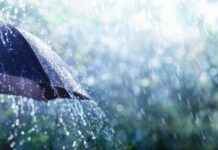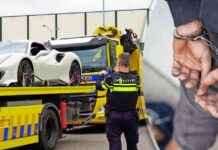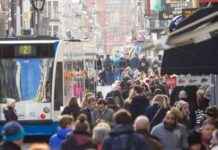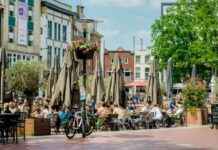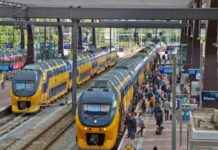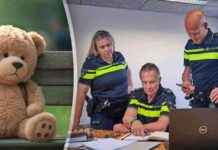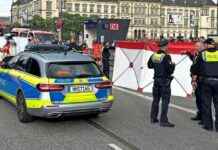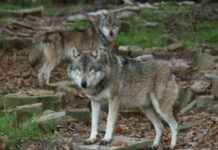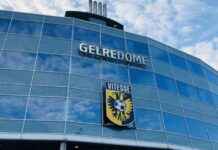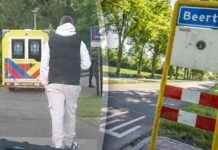When you hear Rügen, you probably first think of beach holidays and seaside resorts. But connoisseurs value Germany’s largest island as an ideal destination for hiking. For example on the Mönchgut in the biosphere reserve of Southeast Rügen, which offers a peculiar landscape: Roughly modeled by the glaciers of the Vistula glaciation, waves and wind gave the area its final touch.
Land and sea are deeply intertwined here, forming hooks and spits. Peninsulas and coastal promontories are sometimes connected by narrow land bridges, sometimes separated by bays and bays. Flat and steep coasts, rocky and sandy beaches, salt marshes and low moors characterize the mystical landscape.
All of this can be explored on a circular hike lasting several hours. Start and finish is the farming and fishing village of Groß Zicker, which still exudes the atmosphere of bygone times and is a listed building. Then it goes up to the Zicker Alps; that’s what the chain of hills is called here, on which it is green and blooming from spring to autumn. And the panorama too! The whole of Southeast Rügen lies at your feet here – including the Baltic Sea and the Bodden landscape.
Hiking tip number two: Germany’s smallest national park, Jasmund, with its world-famous chalk coast, which already inspired Caspar David Friedrich. There is hustle and bustle at the Königsstuhl; On the other hand, those who set off from Sassnitz on the Hochuferweg have the stunning backdrop of white cliffs and green beeches almost to themselves.
Here, in 2005, the 20 meter high pinnacles of the Wissower Klinken slid into the sea, which means that Rügen lost one of its landmarks. Six years later, 500 hectares of beech forest were declared a UNESCO World Heritage Site.
If you dare, you can climb down the steep stairs or ladders to the beach, continue hiking in the shadow of the chalk massifs – and go on a treasure hunt. Coveted finds include chicken gods (flints with a hole in them), thunderbolts (fossil belemnites, prehistoric squid), fossilized sea urchins, amber, and rattles (round flints that rattle when shaken thanks to a cavity filled with fossilized sponge remains).
There will soon be another reason for a hike to the Königsstuhl: The new Skywalk is expected to be inaugurated there in April, a floating viewing platform with spectacular views of the coast, the Baltic Sea and the Königsstuhl.
If you walked all the way along the Zingster beach on the Fischland-Darß-Zingst peninsula, it would take a good four hours – after all, it is 15 kilometers long. The sand is as fine as if it had trickled through a sieve and is as white as in the South Seas. Ideal for beach chair stools and water rats, sports aces and beach party fans, solo travelers and couples, parents and children. Here they can dig in, dig out, shovel sand castles, make pottery castles – and splash around safely in the shallow water.
Zingst offers guarded beach sections, barrier-free access, areas for nudist fans and dog lovers as well as sports beaches for playing Frisbee. If you want to be active, you can go kite and windsurfing, stand-up paddling, kayaking, sailing, water skiing and wakeboarding.
If you want to take home honey from the Baltic Sea as a souvenir, visit the natural beekeeping farm with flowering meadow and bee nature trail by Martin Troelenberg in Zingst. It is not only exciting for children to experience how bees live, how honey is extracted and how it tastes. Brave beekeepers can also open a bee dwelling and remove a honeycomb in beekeeping protective clothing.
Europe’s longest beach promenade, on the other hand, can be experienced on Usedom. It connects the imperial spas of Ahlbeck, Bansin and Heringsdorf over twelve kilometers; it extends to Świnoujście in the Polish tip of the island. Kaiser Wilhelm II was one of the most prominent visitors to the island, which is also known as the “island of the sun” because of the often beautiful weather. To this day, strollers look at the historic resort architecture, on the other hand, the beaches lure, here too fine sand and ideal for everything that you like to do on and in the Baltic Sea.
They are known as lucky birds: cranes – which impress simply because of their size. Her couple dances in spring are a natural spectacle. In Mecklenburg-Western Pomerania they can be easily observed in many places.
Best in the most important resting area for cranes in Central Europe, in the Bock-Rügen-Kirr region in the Western Pomeranian Lagoon Area National Park. With an area of 786 square kilometers, it is the largest national park on Germany’s Baltic Sea coast, and the third largest in the Federal Republic. 83 percent consists of the Baltic Sea and Bodden, the unique lagoons of the Baltic Sea.
During spring and autumn migration, up to 70,000 cranes sometimes rest here at the same time. And in the second half of March they perform their courtship dances with jumps, bows and impressive chases. At the observation stations and on guided tours, bird lovers can view the elegant birds through binoculars without disturbing them.
There is a high probability that you will also see another giant of the air: the white-tailed eagle. Europe’s largest eagle always lives near the water and is a majestic sight with its wingspan of more than two meters.
In Mecklenburg-Western Pomerania, the white-tailed eagle population is larger than anywhere else in Germany; Several pairs are breeding in the Vorpommersche Boddenlandschaft National Park. There are also over 130 other bird species, some of which are very rare, such as the redshank, the curlew and the black-tailed godwit, which are on the Red List of endangered breeding birds.
If you are very lucky, you can even spot porpoises – the only whales native to the Baltic Sea. In the central Baltic Sea, the bottlenose dolphins are unfortunately threatened with extinction. Conservationists are calling for more sanctuaries with no gillnets to trap and suffocate porpoises, and less underwater noise that disorients them. The animals like to stay in shallow coastal waters, so ideally they can even be spotted from land, for example from a vantage point on a cliff.
The chances of seeing a gray seal are higher. Germany’s largest predator is now widespread again throughout the Baltic Sea. It is important to keep your distance on the beach, to keep dogs on a leash and not to block seals from accessing the sea. They are easy to observe with binoculars.
Holidaymakers, on the other hand, can get very close to them in the Ozeaneum in Stralsund. Although no live seals are kept there, visitors can take selfies with seal imitations that look deceptively real at the so-called seal table. An exhibition provides information about seals and other inhabitants of the Baltic Sea, which you can meet personally on a tour of the aquariums – from moon jellyfish to the little-known snake needle (a thin fish up to 60 centimeters long).
Another top destination for a safari is the national park around the “small sea” – the Müritz. With an area of 110 square kilometers, it is Germany’s largest inland lake (because, unlike Lake Constance, it is entirely in Germany). In total, the Müritz National Park includes 107 lakes that are larger than 10,000 square meters, plus hundreds of smaller ones as well as moors and forests.
You can hear the trumpeting of the cranes, see kites circling in the sky, sometimes white-tailed eagles or ospreys, definitely great crested grebes, which like to let their chicks ride boats on their backs. And wonders about the dull moo call of the rare bittern, which gave the bird the common name “water ox”.
Paddling around the island of Rügen in a sea kayak? Experienced people can do it in 15 days. Join the Thousand Lakes Marathon? Intense 42 kilometers on the water. Translate from Fischland-Darß-Zingst to Hiddensee? Also a nice tour for die-hards. Mecklenburg-West Pomerania offers enough opportunities for paddle fans.
But even the inexperienced can discover the silent driving pleasure here. And, for example, rent a kayak in the Baltic Sea resort of Zingst and paddle comfortably around the beach. Or explore the almost untouched Peenetal, with an area of 45,000 hectares the largest contiguous fen area in Central Europe, which is also called the “Amazon of the North” because of its biodiversity. Or paddle across the country’s clear lakes in their sometimes almost Caribbean colors, with fields of water lilies and tunnels of leaves, with frogs and dragonflies.
The Müritz National Park with its many boat rentals is one of the best areas for kayaking and canoeing in the hinterland – from excursions for beginners to multi-day water hikes, if necessary with a shuttle service that brings boats and paddlers back from the destination to the starting point.
From Kratzeburg, for example, you can start a 23-kilometer tour that leads from the source lakes of the Havel to the edge of the national park in the south – a day tour for sporty people, others drive in stages. In any case, a boat trip full of variety and effects. It just went through a bright island idyll, then it suddenly turns dark: in the passage to Lake Granzin, a trellis of black alder awaits; crooked fingers seem to reach out to vacationers like witches’ claws. A moment of goosebumps in the jungle, reflected in the slow-motion flow of the Havel.
Suddenly, an iridescent blue arrow swoops across the water – a kingfisher. Each of the nine lakes on this tour from Käbelicksee to Useriner See has its own character, every river connection has its charm. The canoe even crosses land twice, hikes piggyback onto a lorry and is pushed over the field railway tracks to the neighboring lake.
Cycling through a mosaic of landscapes – Mecklenburg-Western Pomerania is made for it. There are over 2600 kilometers of cycle paths along roads, plus field and forest paths, roads with almost no traffic and tourist cycle paths. Including stages of nine long-distance cycle paths.
One of the loveliest is the Berlin–Usedom long-distance cycle route: stage four leads 60 kilometers from the historic seaside resort of Ueckermünde on the Szczecin Lagoon via the Hanseatic city of Anklam to Usedom-Stadt, stage five over 70 kilometers via Usedom’s seaside resorts to Peenemünde in the north of the island.
Cycle from the Mecklenburg Lake District to Rostock on the Baltic Sea coast – that’s possible on the Berlin-Copenhagen long-distance cycle path, of which 255 kilometers meander through Mecklenburg-Western Pomerania. Along the route are highlights such as the baroque town of Neustrelitz, the Müritz National Park with the picturesque town of Waren and the residential town of Güstrow with its Renaissance palace (one of the 2000 palaces and mansions in the state).
In Rostock, cyclists could then take the ferry across the Baltic Sea to Denmark and pedal on from Gedser to Copenhagen. But it’s worth just staying and exploring the pretty, well-restored Hanseatic city with its monumental brick churches, the port flair and the Baltic Sea resort of Warnemünde.
And then there is the Baltic Coast Cycle Route along the sea, 695 kilometers of which are in Mecklenburg and Western Pomerania. The route runs between Travemünde and Swinemünde, with a big detour around Rügen. Since the constant ups and downs mean that a total of 1469 meters in altitude has to be overcome and because headwinds are to be expected on the water, the route is considered moderately difficult. How good that you can always catch your breath on the go, whether in the sand or in a beach chair.

